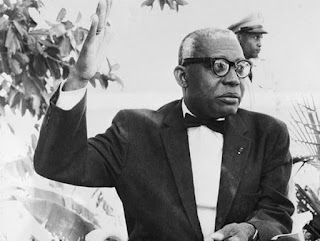It was the worst of times, it was the best of times.
2020 was a wretched year for many, particularly those of us who lost loved ones. Even (relatively) happy election news here in the United States did not dispel the gloom that pandemic and economic shutdown have cast upon the land. Luckily, Future Crunch has compiled regular updates on what good news the year has had to offer, and it turns out there was a fair amount of it. My summary of the highlights follows.
*
In the United States, foster-care adoptions rose by 20 percent over a five-year period. Utah banned gay “conversion” therapy, and Virginia banned economic discrimination against LBGTQ people. The U.S. Supreme Court, in McGirt v. Oklahoma, upheld broad jurisdictional rights for Native American nations. Elsewhere, Saudi Arabia banned child marriage, Iran criminalized child neglect, Sudan repealed sharia law, and Gabon decriminalized homosexuality. Kazakhstan eliminated the death penalty, with perhaps an exception for Borat. Worldwide, boys and girls reached gender parity in primary and high-school attendance.
The climate-induced wildfires in Australia and California gave environmental news an apocalyptic tinge, but there were many favorable developments on this front too. Austria and Sweden closed their last coal-powered electrical plants. Tesla produced its one-millionth electric car and Volkswagen rolled out its last non-electric car. Germany announced plans to turn 60 old military bases into wildlife refuges. The Seychelles and Belize created new oceanic wildlife reserves. India planted more than 250 million trees, while Senegal, with its rather smaller population, announced that its people have planted 150 million mangrove buds since 2010. China, for reasons doubtless related to the coronavirus pandemic, banned the eating, trading, and hunting of wild animals.
Our murderous old friend COVID-19 dominated this year’s health news, but the disease may come under control next year: researchers have developed three effective vaccines in less than twelve months. Health outcomes improved for other aspects of human life: HPV infections among English girls fell to zero, Scotland and New Zealand made sanitary products free for public distribution, and dementia and Alzheimer’s rates in the U.S. and Europe fell fifteen percent over a five-year period. AIDS deaths reportedly fell five percent in 2018-19, and a new anti-retroviral drug for women just debuted. Air-pollution deaths in China fell by 60 percent between 2013 and 2019. Globally, tuberculosis deaths declined by more than 15 percent during the same period. Africa officially eliminated polio, which now remains extant only in two countries in the world.
And 150 new baby elephants were born in Auboseli National Park in Kenya. Toot toot.






